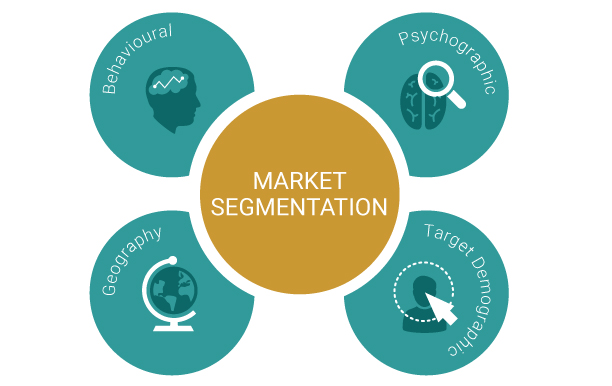In today’s highly competitive business landscape, understanding your target audience is crucial to stand out and succeed. Market segmentation analysis is a powerful tool that enables businesses to identify distinct customer groups and tailor their strategies accordingly. In this article, we’ll delve into the intricacies of market segmentation analysis, exploring its benefits, methods, and real-world applications.
What is Market Segmentation Analysis?

Market segmentation analysis involves categorizing a broader market into smaller, more manageable segments. These segments share common traits that influence their purchasing decisions. By understanding these traits, businesses can create tailored marketing strategies that resonate with each segment.
Why is Market Segmentation Important?
Market segmentation offers several key benefits. It allows businesses to allocate resources more efficiently by focusing on segments with higher potential for conversion. Additionally, it aids in crafting personalized marketing messages that establish stronger connections with customers.
Benefits of Market Segmentation Analysis
- Enhanced Customer Understanding: Market segmentation provides deeper insights into customer behaviors and preferences, leading to more effective marketing strategies.
- Improved Resource Allocation: Businesses can allocate their budgets and efforts to segments that promise higher returns, maximizing the impact of their campaigns.
- Higher Customer Satisfaction: Tailoring products and services to specific segments ensures better satisfaction, as customers feel their needs are understood.
- Competitive Advantage: By catering to niche segments, businesses can differentiate themselves from competitors and become industry leaders.
Types of Market Segmentation
– Demographic Segmentation
Demographic factors such as age, gender, income, and education play a significant role in influencing consumer behavior. Businesses can use this data to customize their offerings.
– Psychographic Segmentation
Psychographic factors focus on customers’ lifestyles, values, and interests. This approach helps businesses create emotionally resonant marketing campaigns.
– Behavioral Segmentation
Behavioral segmentation categorizes customers based on their actions, such as purchasing history, brand loyalty, and usage patterns. This information guides companies in targeted marketing efforts.
– Geographic Segmentation
Geographic segmentation divides customers based on their location. This is especially useful for businesses with products or services that cater to specific regions.
Process of Conducting Market Segmentation Analysis
– Data Collection
Gathering relevant data about customers is the first step. This includes demographic information, purchasing behaviors, and preferences.
– Segmentation Criteria
Businesses define criteria to group customers, ensuring segments are meaningful, actionable, and distinct from each other.
– Data Analysis
Analyzing collected data helps identify patterns and commonalities among different segments.
– Targeting Strategies
Tailoring marketing strategies to each segment’s characteristics ensures messages are relevant and appealing.
Real-world Examples of Successful Market Segmentation
– Apple Inc.
Apple effectively segments its market based on factors like income, lifestyle, and tech-savviness. This approach helps them create products and marketing campaigns that resonate with their diverse customer base.
– Nike
Nike’s market segmentation relies on psychographic and behavioral factors. They understand their customers’ active lifestyles and create products that align with their aspirations.
Challenges
While market segmentation offers numerous benefits, it’s not without challenges. Over-reliance on data, inaccurate segmentation, and evolving customer behaviors can pose difficulties.
Future Trends
As technology advances, market segmentation is becoming more precise. AI and machine learning are enabling businesses to analyze vast amounts of data and identify micro-segments for hyper-personalized marketing.
Case Studies with Record-Breaking Success
- Coca-Cola’s “Share a Coke” Campaign
Coca-Cola’s iconic “Share a Coke” campaign is a stellar example of successful market segmentation. By using behavioral segmentation, the brand personalized bottles with popular names, sparking a viral trend. This personalized approach helped Coca-Cola re-engage with millennials, a demographic they were struggling to connect with. The campaign led to a 2% rise in U.S. sales, proving that a targeted, segmented approach can yield exceptional results. - Spotify Wrapped
Spotify’s annual “Wrapped” campaign taps into psychographic and behavioral segmentation. By analyzing user listening habits, Spotify delivers personalized reports on users’ top songs, artists, and genres. This hyper-personalized experience keeps users engaged and encourages social sharing. The Wrapped campaign has set records in social engagement, with millions of users sharing their unique music stats across platforms.
Quotes from Influencers
- Gary Vaynerchuk (@garyvee):
“Data is cool, but understanding how to use it is the key. Market segmentation allows you to tell the right story to the right audience. That’s how you win!” - Ann Handley (@annhandley):
“Market segmentation isn’t just about data; it’s about empathy. Know your audience deeply enough to serve them in a meaningful way.” - Neil Patel (@neilpatel):
“Segmentation isn’t just for the big guys. Small businesses can benefit massively from focusing on the right customer groups with the right message.”
Real-Time Tweet from a Marketing Expert
- Rand Fishkin (@randfish):
“Market segmentation done right means you’re not chasing everyone, just the folks who will get the most value from what you offer. This is how smart brands grow.”
By leveraging case studies and insights from industry leaders, it’s clear that market segmentation is a game-changer. It enables businesses to precisely target customer needs, resulting in successful campaigns that stand out in a competitive marketplace. Whether you’re Coca-Cola, Spotify, or a small startup, segmentation is the key to crafting relevant marketing strategies that resonate deeply with your audience.
Start segmenting smarter today and see how AIM Technologies can help you with cutting-edge tools for data-driven insights.
Conclusion
Market segmentation analysis is an indispensable tool for businesses aiming to thrive in a competitive market. By understanding their customers on a deeper level and tailoring strategies accordingly, businesses can foster stronger connections, drive growth, and achieve lasting success.
Ready to implement effective market segmentation strategies? Request a demo from AIM Technologies and discover how our advanced tools can help you optimize your business’s marketing efforts. Unlock the power of data-driven insights today.
FAQs
What is the main goal of market segmentation?
- Market segmentation aims to identify distinct customer groups with shared characteristics to better target marketing efforts.
How does market segmentation benefit businesses?
- Market segmentation enhances customer understanding, resource allocation, and overall satisfaction, leading to a competitive advantage.
Can small businesses benefit from market segmentation?
- Absolutely. Market segmentation helps small businesses optimize their limited resources by focusing on high-potential customer groups.
Is market segmentation a one-time process?
- No, market segmentation should be an ongoing process as customer behaviors and preferences can change over time.
What role does technology play in market segmentation’s future?
- Technology, particularly AI and machine learning, will enable more accurate and granular segmentation, driving hyper-personalized marketing strategies.




